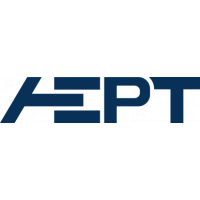The electron power absorption dynamics in radio frequency driven micro atmospheric pressure capacitive plasma jets are studied based on experimental phase resolved optical emission spectroscopy (PROES) and computational (PIC/MCC) simulations. The jet is operated at 13.56 MHz in He with different admixture concentrations of N_2 and at several driving voltage amplitudes. We find the spatiotemporal dynamics of the light emission of the plasma at various wavelengths to be markedly different. This is understood by revealing the population dynamics of the upper levels of selected emission lines/bands based on comparisons between experimental and simulation results. The populations of these excited states are sensitive to different parts of the electron energy distribution function and to contributions from other excited states. Mode transitions of the electron power absorption dynamics from the Ω- to the Penning-mode are found to be induced by changing the N_2 admixture concentration and the driving voltage amplitude. Our numerical simulations reveal details of this mode transition and provide novel insights into the operation details of the Penning-mode. The characteristic excitation/emission maximum at the time of maximum sheath voltage at each electrode is found to be based on two mechanisms: (i) a direct channel, i.e. excitation/emission caused by electrons generated by Penning ionization inside the sheaths and (ii) an indirect channel, i.e. secondary electrons emitted from the electrode due to the impact of positive ions generated by Penning ionization at the electrodes.
| Field | Value |
|---|---|
| Publisher | |
| Authors | |
| Release Date | 2020-09-30 |
| Identifier | e8c69f1b-9224-4475-919f-d6bda667882e |
| Permanent Identifier (URI) | |
| Is supplementing | |
| Plasma Source Name | |
| Plasma Source Application | |
| Plasma Source Specification | |
| Plasma Source Properties | COST-jet, consists of two identical and co-planar parallel electrodes made of stainless steel. The electrode gap is 1 mm. The electrodes are enclosed by two quartz plates confining the plasma volume to 1×1×30 mm^3, the frequency and gas flow vary |
| Language | English (United States) |
| License | |
| Plasma Medium Name | |
| Plasma Medium Properties | The discharge is operated in helium (5.0 purity) with nitrogen (5.0 purity) admixture. The flow rate of helium is fixed at 1000 sccm while the nitrogen flow rate is varied from 0.5 to 4 sccm. This flow rate range of N2 corresponds to reactive gas concentrations between 0.05% and 0.4% in the He buffer gas. The gas pressure inside the jet is estimated to be 1.02(±0.02)×10^5 Pa. The temperature is roughly room temperature. |
| Contact Name | Ihor Korolov |
| Contact Email | |
| Plasma Diagnostic Properties | Experimental PROES(Phase Resolved Optical Emission Spectroscopy) coupled with PIC/MCC simulations |
| Public Access Level | Public |
| Plasma Diagnostic Name | |
| Funding Agency | |
| Project | |
| Subproject |


![[Open Data]](https://assets.okfn.org/images/ok_buttons/od_80x15_blue.png)